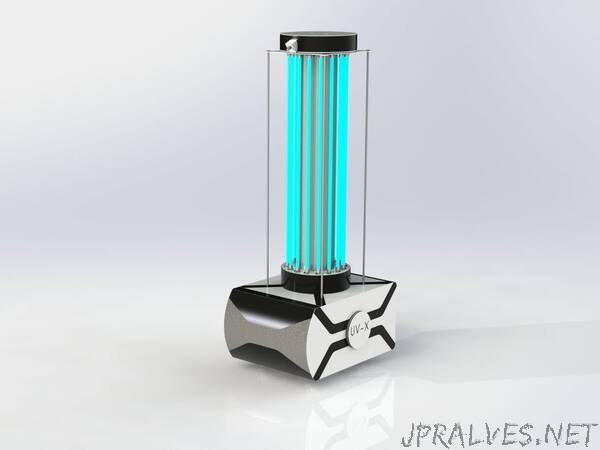
“A robot to disinfect public places and hospitals in a cost-effective way utilizing ultraviolet lights.
Introduction to the Robot
Ultraviolet Germicidal Robot (UV Robot) is a teleoperated robot equipped with a UV light system. The system contains a moving robot vehicle and a ground station controller (GCS). The operator can control the robot using the joystick of the ground station controller (GCS) while observing the camera feed of the robot.
The robot can disinfect and kill diseases, viruses, bacteria, and other types of harmful organic microorganisms in the environment, with ultraviolet light, by breaking down their DNA-structure. Currently, USA, China and Korea have tested these robots successfully to disinfect their hospitals, public transports, office spaces, and other public places. But purchasing a commercially available robot would cost more than 80, 000 USD. Therefore we have implemented this UV robot in a cost-effective way to expand the disinfection process to public places.
Why not disinfectant liquids?
The most common and popular method to disinfect public places is to spray disinfectant liquids which are 70% alcohol-based liquids. Recently, the World Health Organization (WHO) has announced that it is really harmful to use disinfectant liquids regularly in public places. This can cause problems in the respiratory system due to their strong scent, cause skin irritation, and may lead to the unbalances in the environment.
Further, this method is associated with a huge material and labor cost on a daily basis.
Advantages of the UV Robot
One-time cost (No need to refill alcohol or chlorine liquid).
Can be used to disinfect surfaces, medical suits, medical masks, and other medical equipment.
Reduce the disinfection time by 60% when compared to liquid-based disinfection methods. (The drying time is considerably high when used in environments where fabric materials are available).
Ability to use for environments with electronic equipment.
One operator can cover a large area. ( No need of multiple people like in liquid sprays)
We have tested and proven a 99.997% disinfection rate for this robot in collaboration with a microbiology laboratory in a local university. (Explained in the last section)”
